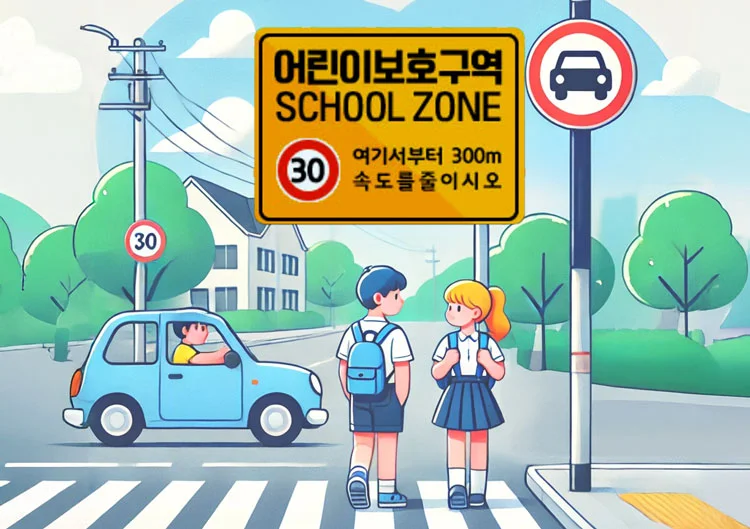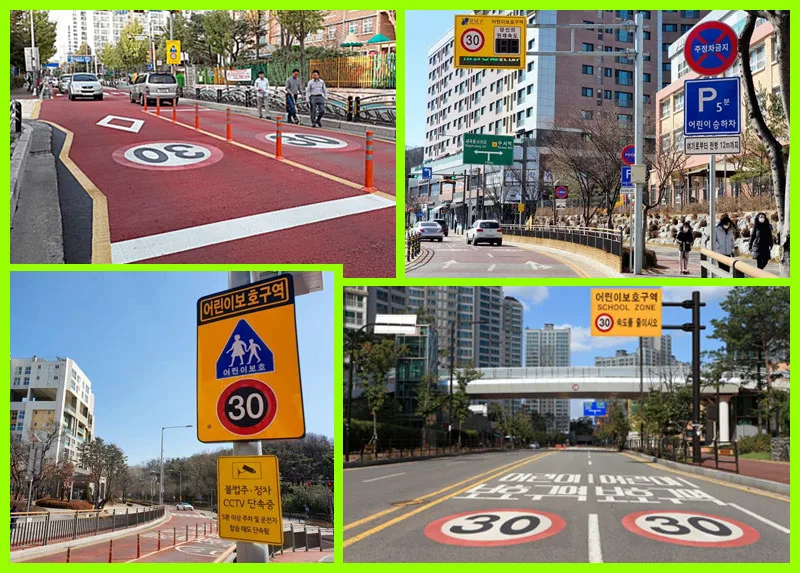Essential Guide to School Zones in Korea for Foreign Drivers
Driving in Korea as a foreigner can be challenging, especially in areas with special rules like school zones.
This guide will help foreign visitors drive safely and legally in Korean school zones. If you're planning to rent a car or drive during your short stay, this information is crucial.
Understanding Korea's unique traffic culture and regulations will make your trip safer and more enjoyable.
What Are School Zones and Why Are They Important?
School zones, also known as 'child protection areas', are special zones prioritizing children's safety. They're typically designated within 300 meters of elementary schools, kindergartens, and daycare centers. These zones have special traffic rules to ensure children's safe commute and pedestrian safety.
How to Drive in School Zones
When driving in school zones, you must follow these rules. School zones are marked on the road and with signs:
1. Speed Limit: You must drive at 30 km/h or less in these areas. This is half the usual speed limit and is crucial for children's safety.
2. Stay Alert: Children can be unpredictable. Always be aware of your surroundings and ready for sudden situations.
3. Obey All Signs and Signals: Strictly follow all traffic signals and signs. Pay extra attention to school zone signs.
4. Stop at Crosswalks: Always come to a full stop at crosswalks, even if there's no traffic light. Pause to check for pedestrians, even if you don't see any.
5. Respect Stop Lines: Always stop behind the stop lines at crosswalks. This is essential for pedestrian safety.
Parking in School Zones
Parking in school zones is very restricted and strictly enforced:
• Parking is generally prohibited in most school zones.
• If unavoidable, you must find and use designated parking areas.
• Illegal parking can result in fines twice as high as in regular areas, so be extra careful.
📌Children's protection zones in Korea have red floors as shown in the photo above, or are limited to 30 km, and yellow signs say "어린이보호구역" or "SCHOOL ZONE".
What Happens If Foreign Drivers Violate Rules
If a foreign driver violates speed or parking rules in a school zone, here's what typically happens:
1. Detection: Violations are detected by police officers or traffic cameras.
2. Fine Issuance: If a violation is confirmed, a fine notice is issued. For foreigners, this is usually communicated through the rental car company.
3. Payment: Fines can be paid at banks or through online banking. Sometimes, rental car companies pay the fine and charge you later.
4. Travel Restrictions: Serious violations or unpaid fines might result in travel restrictions, so be careful.
5. International License Penalties: Repeated violations or serious accidents could lead to the suspension of your international driving permit.
Extra Tips for Foreign Drivers
1. International Driving Permit Required: You must have an International Driving Permit to drive in Korea.
2. Use Navigation Apps: Use navigation apps that support English and Korean. Apps with school zone alerts are particularly helpful.
3. Be Prepared for Emergencies: Always carry the rental car company's emergency contact and insurance information.
4. Learn Traffic Signs: Familiarize yourself with key traffic signs, especially school zone signs.
5. Language Support: In case of traffic violations or accidents, you can request interpretation services. Major police stations offer foreign language support.
Safe driving in school zones is every driver's responsibility. By following these rules, you can make your driving experience in Korea safer and more enjoyable. Always stay alert and prioritize children's safety while driving. Respecting Korean traffic culture and following regulations will ensure a richer and safer trip to Korea.


